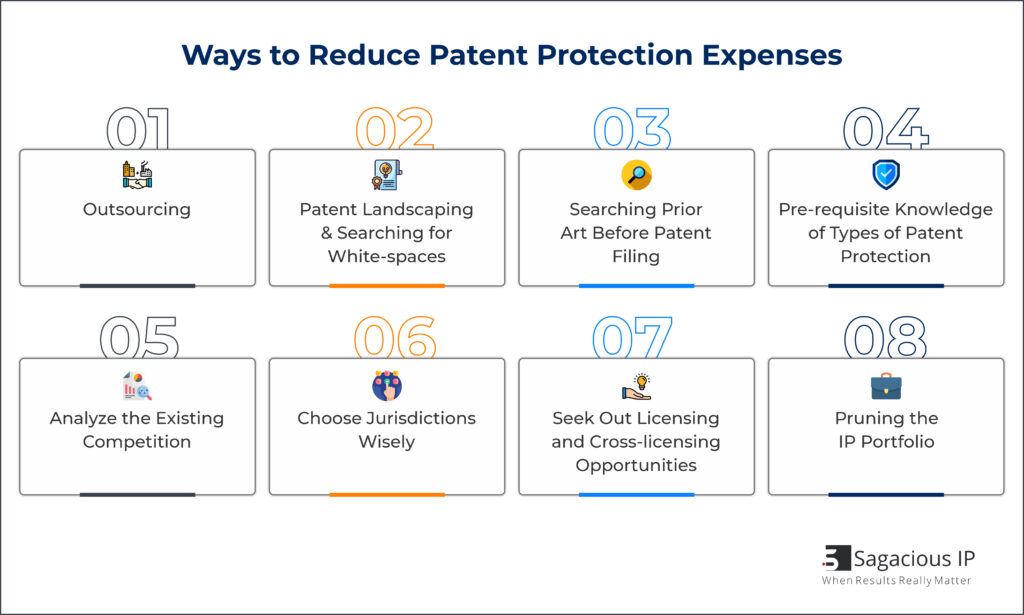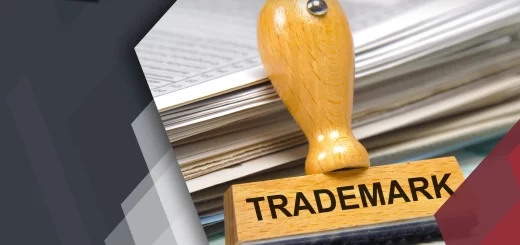8 Ways to Minimise Patent Protection Expenses
Patent rights offer legal protection to creativity and help in incentivizing the efforts that lead to innovation. That’s why patent protection is indispensable for product-centric companies. However, protecting and maintaining patents can occupy a significant portion of working capital. As companies cannot forgo this indispensable process, reducing expenditures related to patent protection is a wiser choice. The following article lists top 8 ways to minimise these costs.
Table of Contents
What is Patent Protection?
A patent can be defined as an exclusive legal right awarded to inventors and creators for the protection of their intellectual assets in various technical domains. Without the patent protection granted by patent rights, a product or service can be commercialised, used or distributed by competitors without the due authorisation of the patent owner. This can incur significant losses for patent owners.
Top 8 Ways to Reduce Patent Protection Expenses

1. Outsourcing
Outsourcing the task of patent protection to experts who specialise and excel in varying domains is an imperative step towards reducing the related expenses. Outsourcing enables organisations to focus on their core competencies, save time and exploit the vast experience of an external consulting service provider. Apart from these, there are several other benefits of outsourcing patent services that can help companies to minimise their patent protection expenditure.
2. Patent Landscaping and Searching for White-spaces
Identifying technological gaps in existing innovations from scratch can be like searching for a needle in a haystack. Patent landscape reports help in analysing the evolution, trends, and current reach of the technology. It also provides useful insights to R&D teams, allowing them to align their efforts with the needs of the market.
Searching for such white spaces in innovations can also help in generating a self-assessment and comparison with competitors, ultimately leading to a reduction in costs related to securing patent protection.
3. Searching Prior Art Before Patent Filing
Conducting a prior art search or patentability search – to determine whether an innovation is novel or not – is a primary step in the process of patent filing. Prior art search also plays a crucial role in minimizing protection expenses, as it eliminates the probability of application rejection at the examination stage during patent prosecution. This can be done by efficiently drafting the patent application on the basis of the outcome of prior art search.
Furthermore, prior art search also helps in knowing the fate of the invention before the start of the examination or prosecution stage. If one is aware of the existing prior arts available in the domain, then based on that judgment one can decide whether to go ahead with IP protection or not.
4. Pre-requisite Knowledge of Types of Patent Protection
To file for a successful patent (either utility or design), one needs to know exactly which category the innovation falls under. Having pre-requisite knowledge about patent protection can curtail these related expenses.
Knowing whether an invention or innovation falls under the design patent or utility patent enables businesses to seek the right type of protection. Not doing so can result in great economic losses because the invention may not receive the adequate protection it needs in order to be commercialised.
5. Analyse the Existing Competition
Since patents hold economic value for organisations, the existing patents of competitors should be analysed. This is because when the product is released into the market, businesses can be assured that it will not infringe upon the patent rights of the competitors.
To do this, the existing products of competitors within the same technological domain need to be analysed. This way the R&D team can learn to tweak their innovations in order to avoid costly IP litigation from such competitors. The analysis needs to be done with respect to a wider jurisdiction for minimising the risk of unnecessary patent protection expenses. The monitoring process cuts down the expense of patent services like landscape reports and prior art searches while developing new technological innovations for patents.
6. Choose Jurisdictions Wisely
Organisations are highly-competitive and always in search of methods to outperform their competitors. Undoubtedly, securing patents in similar market segments is one of the ways to do so. Businesses must identify viable jurisdictions for acquiring patents and leave out the ones where they and their competitors have no economic interests. This can significantly help in lowering protection expenses.
7. Seek Out Licensing and Cross-licensing Opportunities
Apart from filing for patents, organisations should always lookout for licensing and cross-licensing opportunities in emerging and new markets. This step allows them to reduce expenses on further R&D in fields where patents already exist. In such a scenario, it’s more economically beneficial to simply obtain their licenses.
8. Pruning the IP Portfolio
Pruning an IP portfolio to recognise the patents that hold maximum monetary value is essential. Organisations that have a bulky patent portfolio need to identify patents that hold no economic value. They might have several redundant patents which no longer require maintenance and renewal. Such IPs, which are either from an obsolete technological domain or have become irrelevant in the current market trends, should not be renewed further to scale down patent protection expenses. Once identified, it’s better to let them go to minimize protection costs. This helps businesses to save high renewal fees.
Conclusion
While protecting innovations through patents is indispensable, it is wiser to reduce the cost associated with it wherever possible. By minimising such expenses, organisations can divert their capital and resources towards their core functions. It’s beneficial for them in realising their short and long-term objectives, and successfully achieving them.
Sagacious IP’s intellectual property management solutions are designed to provide support for all patent-related services to businesses. Our team of highly experienced patent practitioners offers cost-effective and customized solutions to deliver quality results to organizations.
-Rajat Gulati, Rohit Kumar (Engineering searching) and the Editorial Team
Having Queries? Contact Us Now!
"*" indicates required fields




